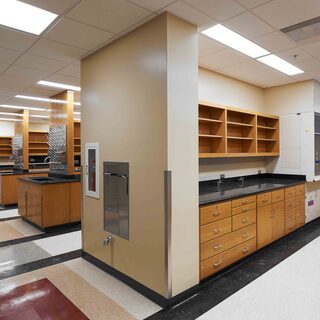Tradeline's industry reports are a must-read resource for those involved in facilities planning and management. Reports include management case studies, current and in-depth project profiles, and editorials on the latest facilities management issues.
Latest Reports
Belfer Research Building
The Belfer Research Building provides Weill Cornell Medical College with a state-of-the-art laboratory facility in close proximity to the institution’s existing clinical, research, and academic buildings. With 13 floors of laboratories, three floors of research support space, and two floors of academic programs, the facility is scaled to accommodate Weill Cornell’s basic, translational, and clinical research needs.
J. Craig Venter Institute La Jolla
The J. Craig Venter Institute in La Jolla is home to 125 researchers and staff dedicated to genomic research involving infectious disease, microbial and environmental genomics, plant genomics, and synthetic biology and bioengineering. It is located on the campus of the University of California, San Diego (UCSD), to take advantage of collaboration opportunities with scientists from UCSD, Scripps, and others.
An Adaptable Core Platform Offers Scientific and Financial Advantages
High-performance core facilities, spurred by proliferating cross-disciplinary investigations and technological advances, can benefit from the long-standing focus on flexibility that has generated so many design efficiencies in the traditional research lab, says Randy Kray, senior vice president and science and technology director of programming and planning at HOK.
Unassigned Seating and No Offices at GSK’s Corporate Office
With no private offices or assigned seats, not even for top executives, employees at GlaxoSmithKline’s (GSK) corporate office at the Philadelphia Navy Yard work in a variety of work settings. Work spaces include the atrium, the cafeteria, sit-to-stand workstations, quiet rooms, meeting rooms, and even the rooftop.
Wallace Tumor Institute and New Cancer Center
A complete interior and partial exterior renovation of the Wallace Tumor Institute, the hub of the Comprehensive Cancer Center at the University of Alabama, Birmingham, achieves the three priorities established by the Center’s director: It provides a front door for the Institute, infuses the building with natural light, and is designed to foster collaboration between scientists.





